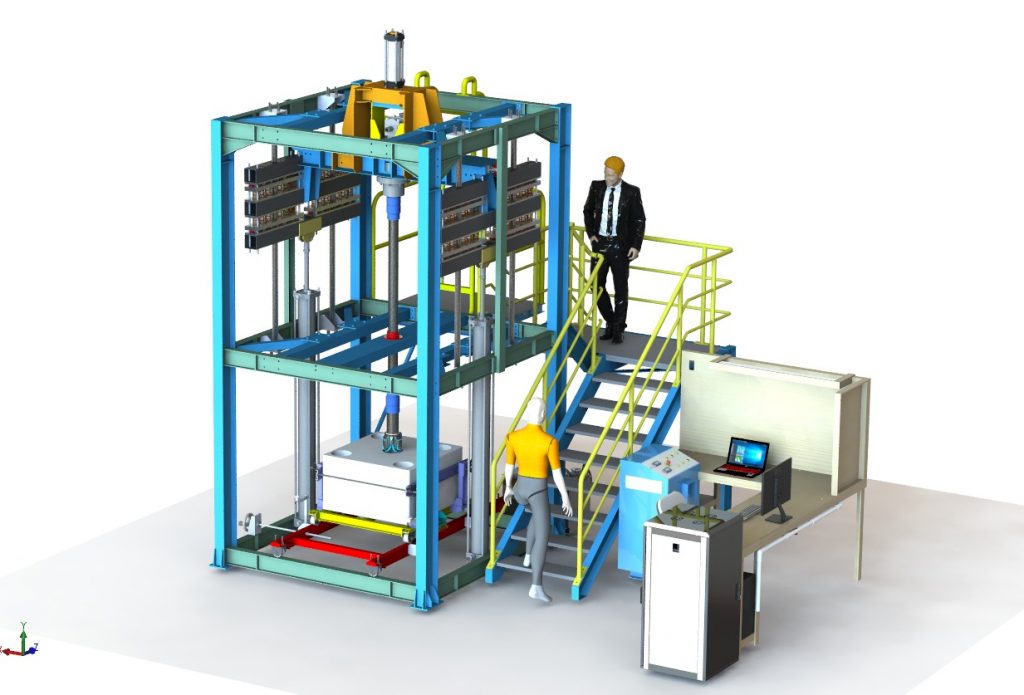Drilling Automation
The purpose of a drilling simulator is to represent the dynamic characteristics of BHA in a controlled laboratory setting accurately reflecting field drilling conditions so that the bit response may be observed and correlated with bit design, operating conditions, and rock parameters. A drilling simulator is controlled through a computer, which also records operating data. Recorded data include Weight on Bit (WOB), torque, rotary speed, and rod position. Our Hardware-In-the-Loop concept is illustrated in figure 1. The motion of the drill string corresponding to a bit force is predicted using a computational model and replicated using a system of actuators. The model used to control the response is not limited to computational models but more generally a prescribed relationship between the input force and the resulting response, obtained from field measurement data.
The present research work addresses modes of vibration up to 100 Hz. The larger frequency modes will typically have smaller amplitudes and accordingly less energy. To accurately reflect reality, vibration modes should be included in all axes but our design is focused only on axial and torsional vibration with influences from confined condition of rock formation.
Hardware-In-the-Loop (HIL) testing is a well proven test methodology from several other industries. It facilitates systematic testing of the autonomous drilling system design philosophy, functionality, performance, and failure handling capability, both in normal and off-design operating conditions, and is conducted in a virtual test-bed where these is no risk to man or equipment (Pedersen et.al., 2013). Lab-scale autonomous drilling system, as illustrated in figure 2, which relies on software to function properly often consist of a combination of components delivered by several suppliers as a common problem in the drilling field. This means that also system software from several suppliers must run and work together as an integrated system in order to maintain safety and achieve the desired operational performance.
Our research activity is aiming to develop a ROP optimization algorithm within an automated loop of vibration process. This algorithm estimates the optimal choice of WOB and bit RPM to optimize overall ROP while adhering to a set of operational limits and does so by employing a model of bit/formation interaction in heterogeneity lithology for PDC bits. This active control is developed in order to suppress stick-slip and bit bounce without affecting drilling performance or worsening other modes of vibration.


